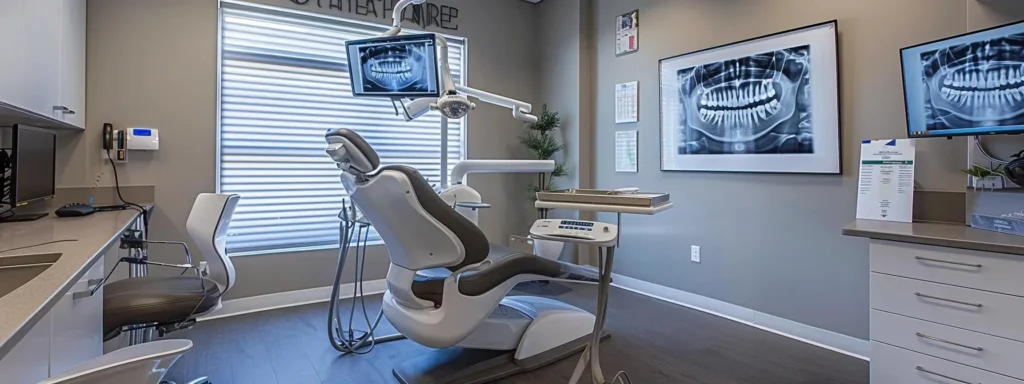Natural whitening methods aren’t automatically safe despite being chemical-free. Dr. Hanam-Jahr’s 25+ years of cosmetic dentistry expertise helps separate effective treatments from potentially harmful DIY trends.
Natural teeth whitening methods have become incredibly popular, especially among people who prefer to avoid chemicals or want a more budget friendly approach to brightening their smile. You’ve probably seen countless articles and social media posts touting everything from baking soda to lemon juice as miracle whitening solutions.
But here’s what you need to know: just because something is natural doesn’t automatically make it safe for your teeth. With Dr. Jamielynn Hanam-Jahr’s 25+ years of specialized cosmetic dentistry expertise and advanced training from the American Academy of Cosmetic Dentistry, we’ll help you understand which natural methods have merit and which could actually damage your smile.
What’s really important is understanding the difference between effective natural methods and potentially damaging ones. Not all natural whitening approaches are created equal, and some can actually compromise your dental health in ways that might surprise you. Let’s dive into what you really need to know about natural whitening safety.
The Truth About Natural Abrasives and Your Enamel
Baking soda and activated charcoal are probably the most popular natural whitening ingredients out there, and they do work by physically scrubbing away surface stains. The problem is that this mechanical action can be a double edged sword when it comes to protecting your tooth enamel.
These abrasive substances work by literally rubbing stains off your teeth, which is why you can see immediate results. However, that same scrubbing action can gradually wear down your enamel over time, especially if you use them frequently or apply too much pressure when brushing.
Here’s what many people don’t realize: once your enamel is worn away, it doesn’t grow back. When enamel becomes too thin, it can expose the softer dentin layer underneath, which is yellowish in color. This means that overusing abrasive natural whiteners could actually make your teeth look more yellow in the long run.
The key to using natural abrasives safely is understanding moderation and proper technique. If you choose to use these methods, limit them to once or twice a week maximum, use gentle pressure, and pay attention to any signs of increased sensitivity that might indicate enamel damage.
Why Acidic Natural Whiteners Can Be Risky
Lemon juice, apple cider vinegar, and other acidic substances are often recommended for natural whitening because they can help dissolve surface stains. While these ingredients do have some whitening properties, they come with significant risks that many people aren’t aware of.
The main problem with acidic whiteners is that they can weaken and erode your enamel. When you expose your teeth to acid, it temporarily softens the enamel surface, making it more vulnerable to damage. If you brush immediately after using acidic substances, you can actually scrub away softened enamel.
Repeated exposure to acidic whitening agents can lead to permanent enamel erosion, increased sensitivity, and greater susceptibility to cavities. The irony is that as your enamel wears away, your teeth may actually become more prone to staining, defeating the purpose of whitening in the first place.
Even occasional use of acidic natural whiteners requires careful timing and technique. If you do use them, wait at least 30 to 60 minutes before brushing your teeth to allow your enamel to reharden. Better yet, rinse with water immediately after use to neutralize the acid.
How Natural Methods Affect Dental Restorations
If you have fillings, crowns, veneers, or other dental work, natural whitening methods present additional challenges that most people don’t consider. These restoration materials don’t respond to whitening agents the same way your natural teeth do, which can create uneven results and other complications.
Natural whitening agents can cause your natural teeth to become lighter while leaving your dental restorations unchanged. This creates a mismatched appearance where your natural teeth are whiter than your crowns or fillings, making your dental work stand out in an unflattering way.
Some natural whitening substances can also affect the adhesive that holds your restorations in place. Acidic ingredients in particular may weaken the bond between your tooth and restoration materials, potentially compromising the longevity of your dental work.
Beverly Hills Aesthetic Dentistry emphasizes the importance of considering your complete dental picture when choosing whitening methods. Professional evaluation can help you understand how different approaches might affect your existing dental work and recommend alternatives that won’t compromise your restorations.
Professional Whitening: The Safer Alternative
When you compare natural methods to professional whitening, the safety and effectiveness differences are pretty dramatic. Professional treatments are specifically designed to minimize risks while maximizing results, something that’s simply not possible with do it yourself approaches.
Professional whitening uses controlled concentrations of proven whitening agents that have been extensively tested for safety and effectiveness. These treatments are customized based on your individual needs, dental history, and current oral health status, eliminating much of the guesswork that comes with natural methods.
The application process in a professional setting is precise and controlled, with protective measures in place to shield your gums and soft tissues from potential irritation. Dental professionals have the training and tools to apply whitening agents safely and effectively.
Professional oversight also means real time monitoring and adjustment if any sensitivity or adverse reactions occur. This level of care and attention simply isn’t possible when you’re experimenting with natural methods at home without professional guidance.
Recognizing Warning Signs and When to Stop
Understanding when natural whitening methods are causing problems is crucial for protecting your dental health. Many people continue using natural remedies even when they’re experiencing warning signs that indicate potential damage.
Increased tooth sensitivity is often the first sign that natural whitening methods are causing problems. If you notice that your teeth are becoming more sensitive to hot, cold, or sweet foods and drinks, it’s time to stop using natural whiteners and evaluate what might be causing the issue.
Gum irritation, unusual tooth pain, or any changes in the appearance of your teeth or gums should prompt you to discontinue natural whitening methods immediately. These symptoms can indicate that the methods you’re using are too harsh or that you have underlying dental issues that need professional attention.
Any persistent discomfort or unexpected reactions warrant professional evaluation. A dental professional can assess whether natural whitening methods have caused damage and recommend appropriate treatment to address any problems that have developed.
The Value of Professional Consultation
Getting professional guidance before starting any whitening regimen, natural or otherwise, can save you from making costly mistakes that could damage your dental health. Beverly Hills Aesthetic Dentistry provides comprehensive consultations that take your complete dental picture into account.
Professional consultation allows for personalized recommendations based on your specific oral health status, dental history, and aesthetic goals. This individualized approach helps you avoid methods that might be problematic for your particular situation while identifying approaches that are most likely to be safe and effective.
Clear communication with dental professionals helps you understand the risks and benefits of different whitening options. This transparency allows you to make informed decisions that align with both your health priorities and your aesthetic goals.
Ongoing professional support throughout any whitening process ensures that you have access to expert guidance if problems arise. This safety net is particularly valuable when experimenting with natural methods that may have unpredictable effects.

Safe Practices for Natural Whitening Enthusiasts
If you’re determined to try natural whitening methods, there are ways to minimize risks while still exploring these options. The key is approaching natural whitening with the same caution and respect you’d give any other treatment that affects your health.
Essential safety practices for natural whitening include understanding proper usage and recognizing limitations:
- Moderation in frequency: Using natural abrasives no more than once or twice per week to prevent enamel wear
- Gentle application: Avoiding excessive pressure or aggressive scrubbing that can damage enamel surface
- Timing considerations: Waiting appropriate intervals between acidic treatments and brushing to protect softened enamel
- Professional monitoring: Regular dental checkups to assess the impact of natural methods on your oral health
- Immediate discontinuation: Stopping use immediately if sensitivity, pain, or other adverse symptoms develop
These safety practices help minimize risks but don’t eliminate them entirely. Natural whitening methods still carry inherent risks that professional treatments are specifically designed to avoid.
Understanding Long Term Consequences
The long term effects of natural whitening methods are often not immediately apparent, which can make them seem safer than they actually are. Understanding potential cumulative damage helps you make more informed decisions about whether natural methods are worth the risks.
Repeated use of abrasive or acidic natural whiteners can lead to progressive enamel thinning that may not be noticeable until significant damage has occurred. Once enamel is worn away, the resulting sensitivity, discoloration, and increased cavity risk can require extensive dental treatment to address.
The cost of treating damage from natural whitening methods often far exceeds the cost of professional whitening treatments. Enamel restoration, sensitivity treatment, and restoration replacement can add up to thousands of dollars in dental bills.
Professional whitening approaches are designed with long term dental health in mind, using techniques and materials that achieve whitening goals without compromising the structural integrity of your teeth. This preventive approach often proves more cost effective over time.
Smart Alternatives and Hybrid Approaches
Many people like the idea of incorporating natural elements into their oral care routines, but they also want to avoid the risks that can come with aggressive or unproven natural whitening methods. The good news is that you do not have to choose between safety and personal preference. When you work with a dental professional, you can create a balanced plan that combines the best of both worlds; natural elements you feel good about, paired with proven, safe techniques that protect your teeth and gums. This blended approach ensures that you still benefit from modern dental science while honoring your preference for more natural options.
Professional guidance can help you develop hybrid approaches that combine some natural elements with proven safe techniques:
- Natural maintenance strategies: Using whitening toothpaste with natural ingredients for daily maintenance between professional treatments
- Dietary modifications: Focusing on foods that naturally support oral health and minimize staining
- Gentle natural rinses: Using diluted natural antiseptic rinses that support oral health without aggressive whitening action
- Professional treatments with natural follow up: Combining professional whitening with natural maintenance approaches
- Preventive natural practices: Emphasizing natural methods that prevent staining rather than trying to remove existing stains
These strategies are designed to give you the freedom to include natural elements in your oral health care without sacrificing safety or results. By working with a dentist to customize the plan, you can avoid the damage that can occur with overly abrasive methods or unregulated home remedies. In the end, a hybrid approach not only supports your whitening goals but also helps maintain your overall oral health, giving you a brighter smile you can feel confident about for years to come.
Making Informed Decisions About Your Smile
The decision about how to whiten your teeth should be based on accurate information about both the benefits and risks of different approaches. Natural methods aren’t inherently better or worse than professional treatments, but they do come with different risk profiles that you need to understand.
Consider your individual circumstances when evaluating whitening options. Factors like your current oral health, existing dental work, sensitivity history, and long term goals all influence which approaches are most appropriate for your situation.
Beverly Hills Aesthetic Dentistry believes in empowering patients with complete information so they can make decisions that align with their values and priorities. Whether you choose natural methods, professional treatments, or a combination approach, understanding the implications helps ensure better outcomes.
The most important factor is ensuring that your pursuit of a brighter smile doesn’t compromise your overall oral health. A beautiful smile is only truly beautiful when it’s also healthy and functional for years to come.
Your Path Forward
Natural whitening methods can be part of a comprehensive oral care strategy when used appropriately and with proper understanding of their limitations. The key is approaching them with realistic expectations and appropriate caution rather than assuming they’re automatically safe because they’re natural.
Professional guidance from experienced cosmetic dentists like Dr. Jamielynn Hanam-Jahr, with 25+ years of expertise and advanced training from the LSU Cosmetic Continuum, remains invaluable regardless of which whitening approach you choose. As a certified member of the American Academy of Cosmetic Dentistry, Dr. Hanam-Jahr can help you navigate the options safely and effectively while monitoring for any signs of problems that might require intervention.
Remember that the goal isn’t just a whiter smile, but a healthy, beautiful smile that serves you well throughout your life. Making informed decisions based on complete information rather than marketing claims or social media trends gives you the best chance of achieving both aesthetic and health goals simultaneously.
Don’t wait to transform your smile! Schedule a consultation with the best dentist in Beverly Hills, CA, Dr. Jamielynn Hanam-Jahr. Your journey to a brighter, more confident smile starts here.
Schedule Your Consultation Today!
Beverly Hills Aesthetic Dentistry
Get Directions Here 435 N Bedford Dr #414, Beverly Hills, CA 90210
See More Reviews From Beverly Hills Aesthetic Dentistry. View information about local places in our community. Get driving directions to Beverly Hills Aesthetic Dentistry.
Frequently Asked Questions
Are natural teeth whitening methods safe for my enamel?
Some natural methods can be safe when used properly and sparingly, but many popular options like lemon juice and frequent baking soda use can actually damage enamel over time. The key is understanding that natural doesn’t automatically mean safe, and moderation is crucial. Professional consultation can help you identify which natural methods might be appropriate for your specific situation.
Can natural whitening methods damage my dental restorations?
Yes, natural whitening methods can affect the color and integrity of fillings, crowns, and veneers. These materials don’t respond to whitening agents the same way natural teeth do, which can create uneven results. Some natural substances may also weaken the adhesive holding restorations in place, potentially compromising their longevity and requiring costly repairs.
Should I choose professional whitening over natural alternatives?
Professional whitening offers greater safety, predictability, and effectiveness compared to natural methods. While natural alternatives may seem appealing, professional treatments are specifically designed to minimize risks while maximizing results. They’re customized to your individual needs and monitored by trained professionals, providing a level of safety and effectiveness that natural methods simply cannot match.
Related Articles
Tooth Whitening
Professional Teeth Whitening Methods
Teeth Whitening Techniques
At-Home Teeth Whitening
Natural Teeth Whitening
Teeth Whitening Safety and Risks
Teeth Whitening Maintenance




